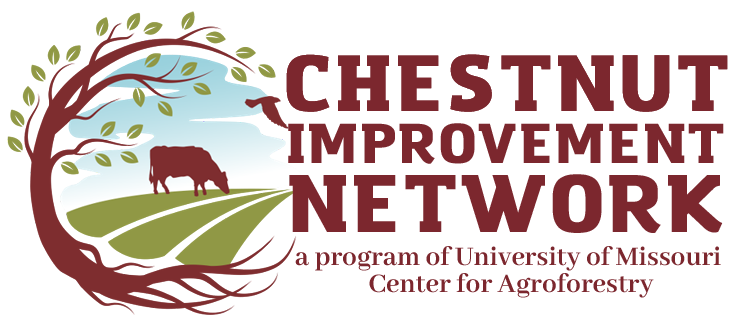Membership
Ways to get involved - and expand the breeding footprint
Traditional programs centralize the breeding process at institutions. CIN is made up of an expanding network of participatory growers that takes the breeding process on-farm, using pedigreed-seedling families. On-farm evaluations allow breeding for multiple target environments and incorporating grower insight and feedback into selection criteria. There are three ways growers can be members in this network.
Donating Members
Donating members contribute plant materials (scion, pollen) to the network from on-farm selections that demonstrate, through observation and evaluation, breeding value. Breeding value implies that selections hold traits of interest and express them in program target environments. Donating members may maintain ownership of their plant materials, but they permit their use in breeding for CIN.
Benefits:
- Early access to new cultivar releases that advance from replicated trialing.
- Shared ownership of first-generation offspring descending from donated selections with MU and CIN.
- Early access to new breeding selections for replicated trialing
- Peer-to-peer knowledge sharing
- Shared ownership with MU and Network on first generation progeny descending from crosses made with your germplasm (full ownership of the food crop).
- Conserve and maintain valuable selections in ex situ repositories
- Enter selections to the E-Brida management database to enable data archiving and ramet tracking
- Incorporation of donated selections into replicated trials
Breeding Members
Breeding members purchase and cultivate full-sibling families and/or curated open pollinated families. These breeding populations must be composed of at least 250 individuals from the CIN breeding material. Breeding members participate, based on their interests, with CIN research staff to evaluate and make field selections from these families.
Benefits:
- Early access to new selections for replicated trialing.
- Early access to new cultivar releases advanced from replicated trialing (up to 4 years before public release).
- Access to unique seedling populations
- New full-sibling families from hand-pollinated crosses.
- Open-pollinated seedlings from the UMCA curated cultivar repository.
- Access to unpublished data, including that on new selections, accessions, and cultivars.
- Seedling identity tracking with barcode labels and E-Brida, a state-of-the-art germplasm management database
- Access to E-Brida field-application
- Improved data collection accuracy
- Consistency methods across farms
- Automated data archiving and storage
- Peer-to-peer knowledge sharing
- Contribute to shaping the research agenda in quarterly and annual meetings
- Shared ownership of breeding selections made on your farm with MU and Network (full ownership of the food crop)
Supporting Members
Supporting members are chestnut growers and enthusiasts that may not have existing trees to donate or orchards large enough for systematic breeding but would like to participate and engage with the network. Supporting members may purchase and grow smaller quantities of CIN plant material and engage with the CIN community in Q&A, the member forum (nuts and bolts), and public forum (broad grower engagement and extension platform).
Benefits:
- Resources to coordinate on-farm evaluations and submit data, if desired.
- Peer-to-peer knowledge sharing through Q&A and grower forums.
- Barcode labeled trees with verified maternal parentage.
The Role of the Breeding Member
The Role of the Breeding Member is to cultivate their orchard as they would commercially but with CIN breeding seedlings in a blocked layout of families, so that applied breeding can be integrated. The breeding material may be full-sibling families or open-pollinated families, as long as the material is from our program.
The greatest genetic gain comes from scale, and at present, the minimum number of trees for a Breeding Member is 250 (initial spacing at 70-110 trees/acre depending on density). Breeding Members will need to work with the research staff to incorporate blocking of multiple families in the orchard layout.
Growers are themselves not required to collect any data on performance, but easy to apply methods and resources are available should they be so inclined. The orchard simply needs to remain accessible to MU and CIN researchers for evaluation and potential propagation of selections.
Prior experience cultivating chestnuts is not required, but previous experience growing trees or other crops is preferred. Cultivating a chestnut orchard does represent a serious commitment.
Questions about Membership, or how to Register?
302ABNR Bldg. Columbia, MO 65211




